Full Name Gabriel Dumont Books Gabriel Dumont Speaks | Nationality Métis Ex-spouse Madeleine Wilkie | |
 | ||
Born December 1, 1837 ( 1837-12-01 ) Known for being a founder of Métis recognition Siblings Isidore Dumont, Pélagie Dumont Similar Louis Riel, Pitikwahanapiwiyin, Thomas Scott, John A Macdonald | ||
Gabriel dumont m tis leader
Gabriel Dumont (December 1837 – May 19, 1906) was a leader of the Métis people of what is now Western Canada. In 1873 Dumont was elected to the presidency of the short-lived republic of St. Laurent; afterward he continued to play a leading role among the Métis of the South Saskatchewan River. He played a critical role in bringing Louis Riel back to Canada, in order to pressure the Canadian authorities to pay attention to the troubles of the Métis people. He was adjutant general in the provisional Métis government declared in the District of Saskatchewan in 1885, and commanded the Métis forces in the North-West Rebellion or North West Resistance of 1885.
Contents
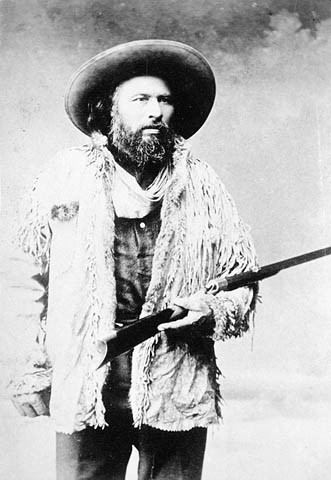
Early life

Dumont was a grandson of the French Canadian Jean-Baptiste Dumont and his Tsuu T'ina-Crow wife, Josette. He was the second son of Isidore Dumont and Louise Laframboise. The family were at various times involved in farming, trading, hunting, and trapping in what is now the province of Saskatchewan. Gabriel was raised a Métis, learning both French Catholic and Cree customs. By the time he was 12, he was considered an accomplished shot with both gun and bow, and was well known as a master horseman. In 1848, the Dumont family moved south to the area where Regina, Saskatchewan, would later be founded. Dumont, and his older brother Isidore, became buffalo hunters. Over time, Dumont learned six languages, and established a reputation as a guide, hunter and interpreter. He was also famed for his drinking and gambling. Dumont participated in skirmishes with First Nations, including the Blackfoot and Sioux.
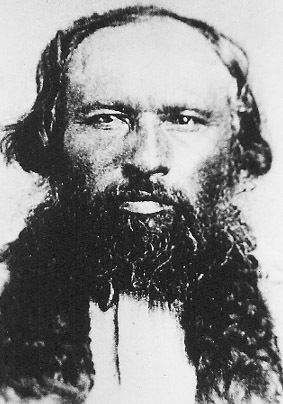
Dumont married Madeleine Wilkie, the daughter of the Anglo-Métis chief, Jean Baptiste Wilkie, in 1858, and in 1862 was elected chief of his Métis band. He led the band to the North Saskatchewan River, where they briefly settled near Fort Carlton. By 1868, the band established a permanent settlement near Batoche on the South Saskatchewan River. In 1872 Gabriel established a ferry service near Batoche, at "Gabriel's Crossing" (east of present-day Rosthern, Saskatchewan, where the Gabriel Bridge is today) and also farmed near there.
Resistance
Dumont's enemies in 1885, including General Frederick Middleton of the Northwest Field Force, praised his generalship and martial abilities. Despite huge logistic and morale problems, he can be credited with a victory at the Battle of Fish Creek and managed to hold off a much larger force at the Battle of Batoche for several days. Riel refused to let him make vital strategic actions such as damaging railway lines to hinder the enemy's movement, providing the Canadian government with an advantage.
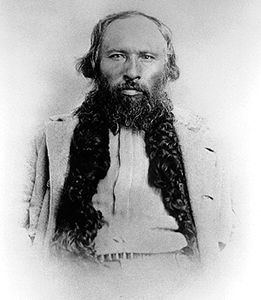
Following the defeat at Batoche, Dumont made his way via the Cypress Hills to the Montana Territory, where he surrendered to the U.S. Cavalry. However, the U.S. government determined that he was a political refugee and he was shortly released.
Later life
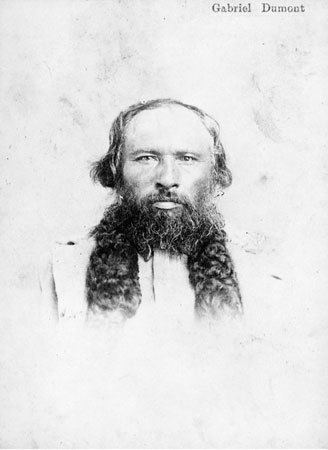
In 1886, Dumont joined Buffalo Bill's Wild West, where he received top billing as a rebel leader and crack marksman. He traveled with the show from July until September, but returned for brief appearances as an extra in 1887 and 1888.
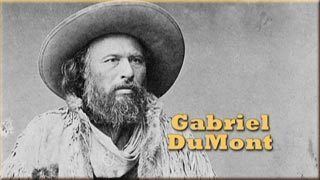
While living in New York, Dumont made contacts with the French Canadian community there, including French Canadian nationalists who saw parallels between the suppression of the Metis rebellions and their own political situation. Laurent-Olivier David, serving as president of the Saint-Jean-Baptiste Society of Montreal invited Dumont to Quebec for a lecture tour. Dumont's criticism of Roman Catholic clergy for its lack of support for the rebellion proved unpopular with audiences, however, and the tour was cancelled after a single lecture.

In 1889, he provided a complete account of his experiences in the rebellion, but after that his life is poorly documented. He later claimed to have traveled to France during this time, but he was certainly in Winnipeg in 1893 to acquire land-scrip for his homestead near Batoche. At some point, he built a small cabin on the farm of his nephew, Alexis Dumont, and lived there until his death in 1906. At the time, his death went unnoticed among the broader Canadian community, having largely slipped from the public consciousness.
Legacy
In the spring of 2008, Tourism, Parks, Culture and Sport Minister Christine Tell proclaimed in Duck Lake, that "the 125th commemoration, in 2010, of the 1885 Northwest Resistance is an excellent opportunity to tell the story of the Prairie Métis and First Nations peoples' struggle with government forces and how it has shaped Canada today."
Batoche, where a Métis Provisional Government had been formed, has been declared a National Historic Site. Batoche marks the site of Gabriel Dumont's grave marker, Albert Caron’s House, Batoche school, Batoche cemetery, Letendre store, Gabriels river crossing, Gardepy's crossing, Batoche crossing, St. Antoine de Padoue Church, Métis rifle pits, and NWMP battle camp.
The Gabriel Dumont Institute of Native Studies and Applied Research in Saskatchewan was named in his honour. The Dumont Bridge over the South Saskatchewan River east of Rosthern, Saskatchewan, is also named for him. It is located at the site of Gabriel's Crossing, where he ran a small store, billiards hall and ferry service in the late 1870s and early 1880s. There is also a park along the South Saskatchewan in Saskatoon named for him, as well as an equestrian statue depicting him along the river between the Broadway and Victoria Bridges on the west side of the South Saskatchewan River.
In 1998, the public French-first-language high school in London, Ontario, was renamed École secondaire Gabriel-Dumont in his honour.
